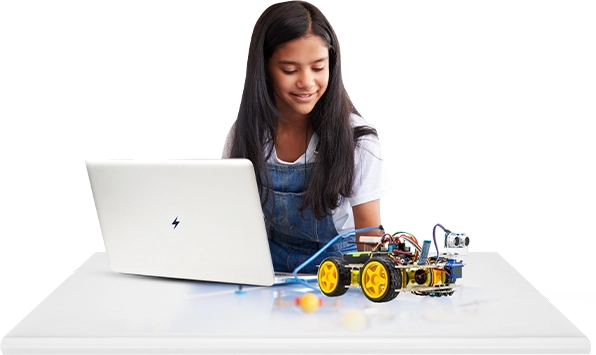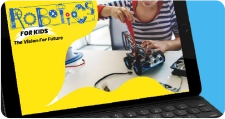
Image Source: https://news.mit.edu/2023/study-preschool-gives-big-boost-college-attendance-0208
Update: This article was last updated on 27th November 2023 to reflect the accuracy and up-to-date information on the page.
In today’s rapidly changing world, children need to develop a wide range of skills, including problem-solving, critical thinking, leadership, and communication skills, to thrive as they grow up. One effective way to foster these future-ready skills in children is by introducing them to robotics.
With its interactive and engaging nature, robotics can spark children’s interest in science, technology, engineering, and math (STEM).
Moreover, robotics can help preschoolers enhance their motor skills while teaching them important life skills.
In this blog post, Moonpreneur will explore the benefits of teaching robotics to preschoolers and provide practical tips on how to do it successfully.
Benefits of teaching robotics to preschoolers:
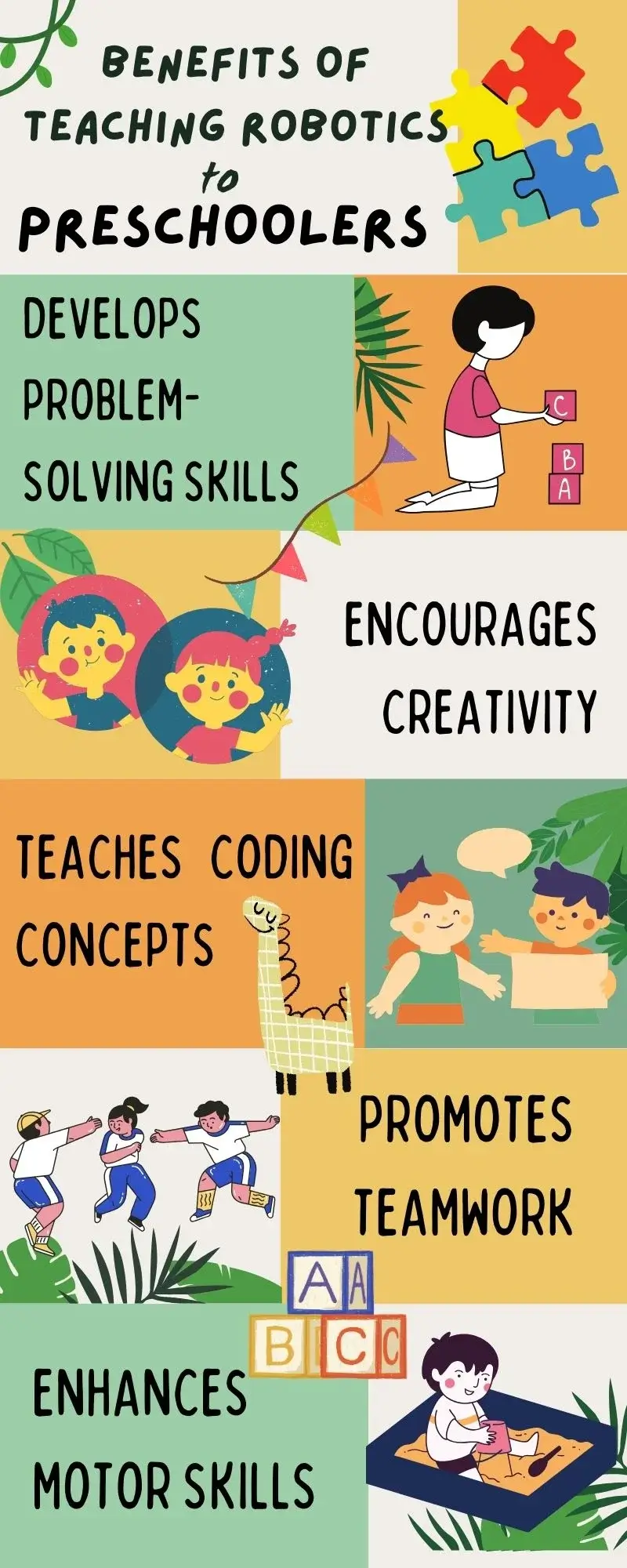
1. Develops problem-solving skills
From tracing robot shapes to solving robot puzzles to working with robotic kits such as Traffic Light Kit will not only usher the preschoolers into the world of robotics but also make them think, remove obstacles and complete the task.
When they regularly indulge in such activities, they will recognize issues and apply their problem-solving abilities to identify the root of the problem and devise a solution.
2. Encourages creativity
Preschoolers’ inventiveness is also boosted by robotics exercises. Children are given the chance to use their ideas and develop original solutions to challenges when designing and creating a robot.
They can experiment with various shapes, colors, and materials to make a robot that is distinctive and useful. Through this creative process, children can think outside the box and generate their ideas, supporting the growth of their sense of identity and self-expression.
Encouraging their creativity can increase preschoolers’ confidence and self-esteem as they watch their robot plans come to life.
3. Teaches coding concepts
Preschoolers can learn about coding basics in a fun and interesting way through robotics activities. For instance, they can learn about sequencing, loops, and other coding concepts through simple programming languages such as Scratch.
As they will continue, they can establish a solid foundation in computer science by learning the fundamentals of coding at a young age.
Additionally, they will be acquainted with computers and develop an interest in computer science by learning coding fundamentals.
4. Promotes teamwork
Preschoolers often collaborate when working on a robotics project to design and construct their robots. They must cooperate and communicate with one another for their robot to function as planned.
By working together on a project, preschoolers can develop essential collaboration skills such as communication, cooperation, and problem-solving.
These skills are necessary for success in all areas of life, including employment, school, and interpersonal interactions.
5. Enhances motor skills
Fine motor abilities are necessary for moving small objects, assembling parts, and building robots. Preschoolers can benefit from these exercises by improving their dexterity, hand-eye coordination, and spatial awareness.
Additionally, some robotics tasks need you to walk around physically, such as guiding a robot through an obstacle course or using it to pick up goods.
Children can benefit from these exercises as they grow in strength, coordination, and other gross motor abilities.
List of Books for Preschoolers
| Book Title | Author's Name |
|---|---|
| The Very Hungry Caterpillar | Eric Carle |
| Goodnight Moon | Margaret Wise Brown |
| Brown Bear, Brown Bear, What Do You See? | Bill Martin Jr. and Eric Carle |
| Where the Wild Things Are | Maurice Sendak |
| Don't Let the Pigeon Drive the Bus! | Mo Willems |
| If You Give a Mouse a Cookie | Laura Numeroff |
| The Snowy Day | Ezra Jack Keats |
| We're All Wonders | R.J. Palacio |
| Pete the Cat: I Love My White Shoes | Eric Litwin and James Dean |
| Blueberries for Sal | Robert McCloskey |
How to teach robotics to preschoolers?
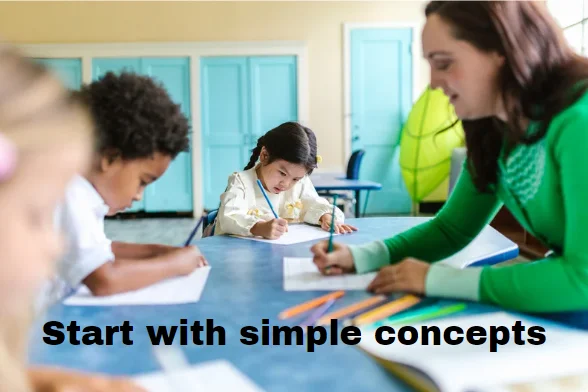
1. Start with simple concepts
It’s crucial to start with straightforward ideas that are simple enough for preschoolers to comprehend while educating children about robotics. They have limited cognitive ability and short attention spans.
Use simple activities and vocabulary that are suitable for preschoolers.
2. Use age-appropriate materials
When teaching robotics to preschoolers, it’s essential to use tools that are age-appropriate, safe, and user-friendly. If the materials are vibrant and entertaining, kids are more likely to be interested and enthusiastic about them. To ensure a safe and enjoyable experience with robotics, it’s crucial to choose materials that are suitable for their age and to supervise them. At the same time, they work with the materials to ensure responsible and safe usage.
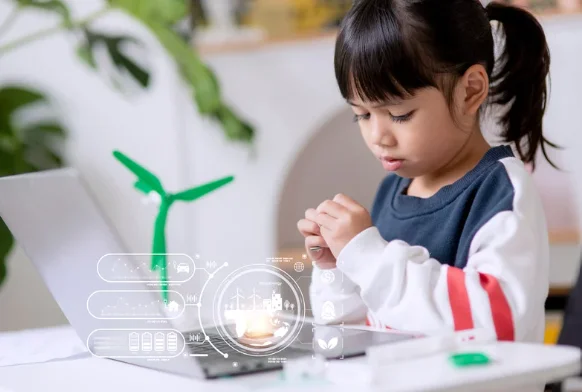
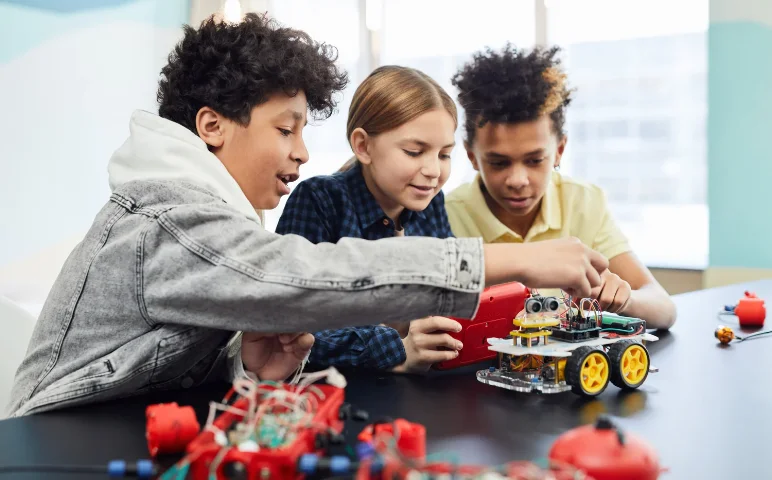
3. Incorporate play
Play encourages exploration and discovery while allowing kids to interact with the materials playfully and creatively. Encourage children to use their imagination by allowing them to create their robot designs and experiment with different materials.
Preschoolers may learn important concepts in robotics activities by using imaginative and engaging play. Don’t forget to stimulate imagination and creativity as you create a dynamic environment for preschoolers to explore and play with the materials.
4. Provide guidance and support
As preschoolers are at a very young age, they require assistance and guidance to comprehend concepts and complete tasks. This can make them feel supported and motivated to continue learning.
By providing direction and encouragement while teaching robotics to preschoolers, you can foster a growth mindset and a passion for learning.
Introducing preschoolers to robotics through age-appropriate materials, simple principles, play, teamwork, and guidance can help them acquire important skills and interests that will benefit them in their academic and professional lives.

Robotics can also be an enjoyable and accessible way to introduce young students to science, technology, engineering, and math (STEM).
Moonpreneur understands the needs and demands this rapidly changing technological world is bringing with it for our kids. Thus we are on a mission to educate and ignite the flames of entrepreneurship through our holistically created online STEM programs, which will help kids master the futuristic sciences such as Robotics, Game Development, App Development, Advanced Math, and much more!!
Register for a free 60-minute Robotics class today!



